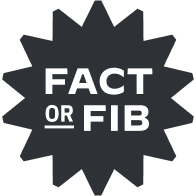What animal has rectangular pupils?
Wednesday, May 8, 2024
 Make every day more interesting. Each day a surprising fact opens a world of fascinating information for you to explore. Did you know that….?
Make every day more interesting. Each day a surprising fact opens a world of fascinating information for you to explore. Did you know that….? 









| Original photo by ArisSu/ iStock |
| Goats have rectangular pupils. | The animal kingdom is full of incredible variety, thanks to evolution, but one thing most animals have in common is that they use a set of eyes to navigate the world around them. But even the pupil of the eyeball, the biological aperture responsible for how much light enters the eyes, is nearly as diverse as the types of birds that soar the skies or fish that swim the seas.
For mammals, one big factor determining the shape of a pupil is whether the creature is predator or prey. For example, a goat is a grazing prey animal that would be a pretty easy target for coyotes, bears, and other predators with sharp teeth. Yet evolution gave the goat a few tools to defend itself. The horns certainly help, but the biggest advantage is a goat's horizontal rectangular pupils. These long, horizontal pupils create a panoramic view that lets the animal see more of the landscape, which makes it harder to sneak up on them. The pupils also enhance the image quality of objects (read: threats) all around the goats, and they cut down on glare from the sky by capturing less light from above and more from below. Cats and snakes, on the other hand, are ambush predators, whose vertical pupils help them hunt in the night and judge the distance between themselves and their next meal. But according to scientists, vertical pupils are reserved only for animals whose eyes are close to the ground. That's why other cats that are higher up, like lions and tigers, have round pupils rather than vertical ones.
|
|
 | | Humans can't keep their eyes open when they sneeze. | | |
|
|
| Humans can't keep their eyes open when they sneeze. |  |  |
|
|
|
|
|
| Hands Down Some of the Best Credit Cards for Traveling | | There's some big news in credit cards — and it's worth your attention. These travel cards are offering significant bonuses and rewards points on all of your purchases to use toward future trips. Check out the article to take advantage of some of the hottest new cards on the market. |
|
|
|
| The first use of the acronym GOAT (Greatest Of All Time) was in reference to __. |  |
|
|
 | Numbers Don't Lie |
|
 | | Years ago the first animals with eyes appeared on the planet | | 550 million |
|
|  | | Maximum size (in millimeters) of the human pupil in the dark (at full dilation) | | 8 |
|
|
|
 | | Approximate year the first goats were domesticated, in western Iran | | 8000 BCE |
|
|  | | Height (in feet) a mountain goat can jump in a single bound | | 12 |
|
|
|
|
|
 | Goats have accents. |
|
| A 2012 study from Queen Mary University of London revealed that kids (the goat kind, not the human kind) altered their bleating when socializing with other goats. The ability to change one's voice in response to a social environment is known as "vocal plasticity," and humans display an extreme form of this concept — it's how we can develop accents. Goats develop similarly distinct accents based on their social group, admittedly with a more limited vocabulary. In the study, scientists analyzed one-week-old goats compared to five-week-old goats; the latter is about the time goats form social groups known as "crèches." They found that young goats raised in the same crèches developed similar bleats, altering their noises to fit in their social group as they aged. It's also possible these accents help goats identify members of their group, an idea familiar to anybody who's traveled outside their home country — or even their hometown. | | |
|
|
|
| Thank you for supporting our advertisers. They help keep Interesting Facts free! |
|
|


posted by June Lesley at 5:27 AM


![]()
![]()
![]()
![]()
0 Comments:
Post a Comment
<< Home